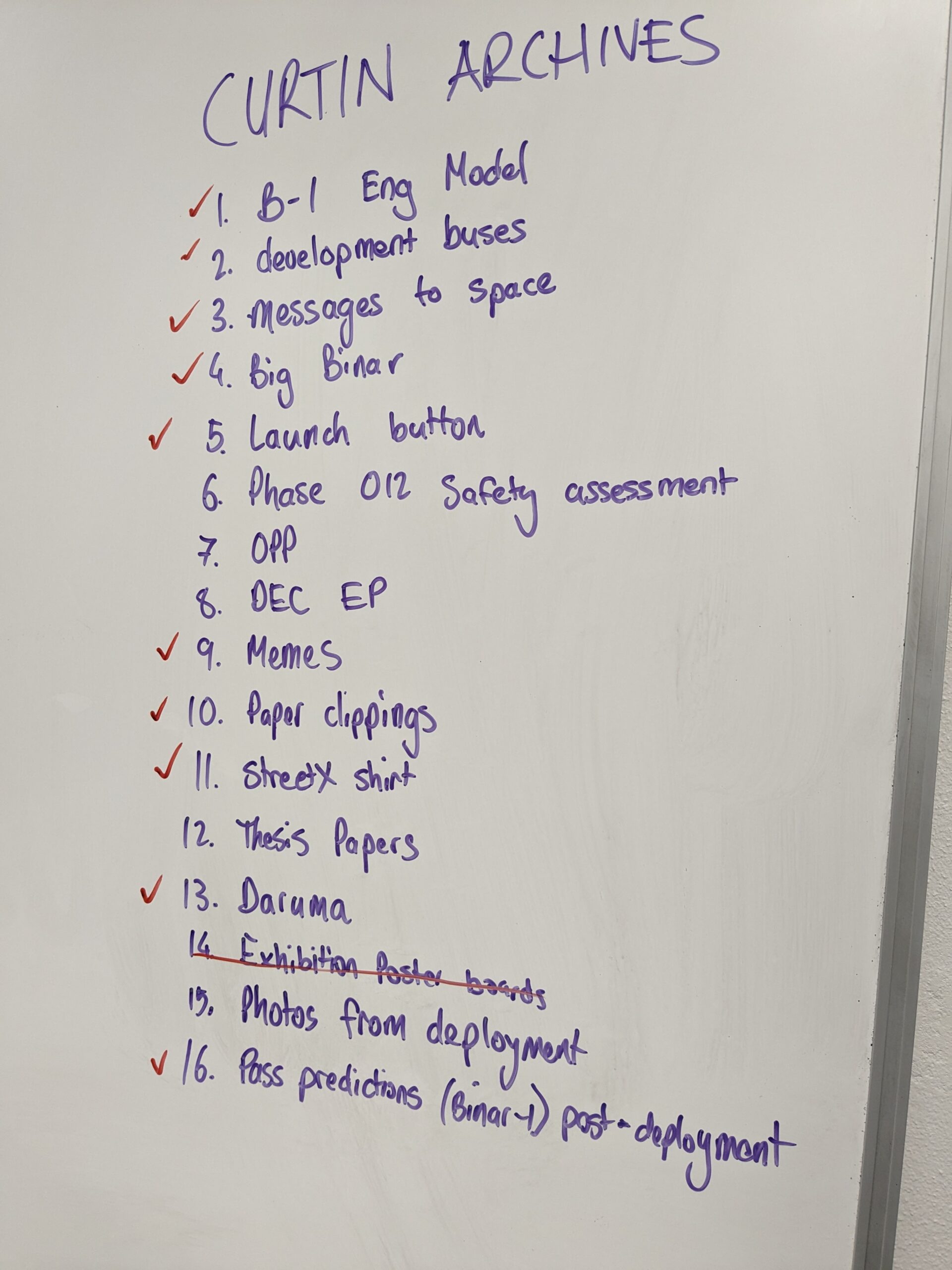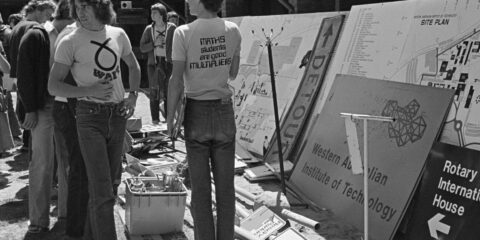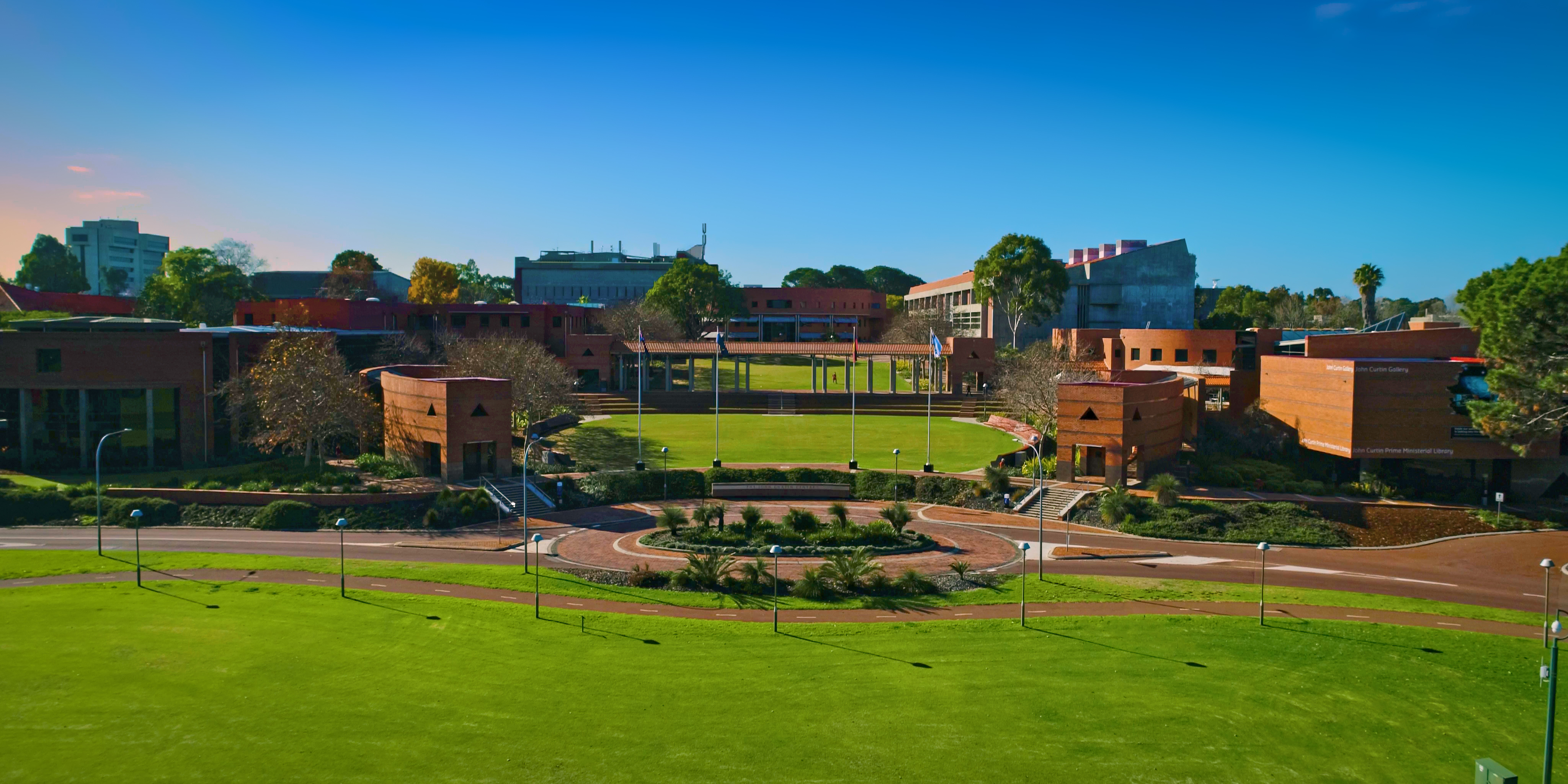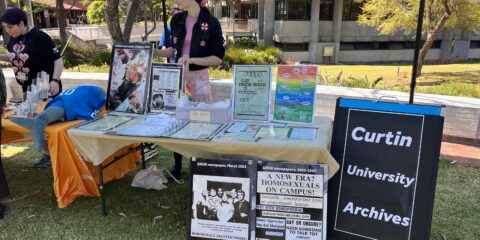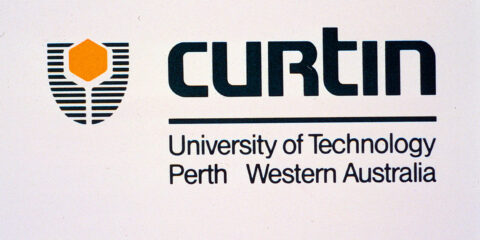Archiving Binar-1 satellite mission artefacts
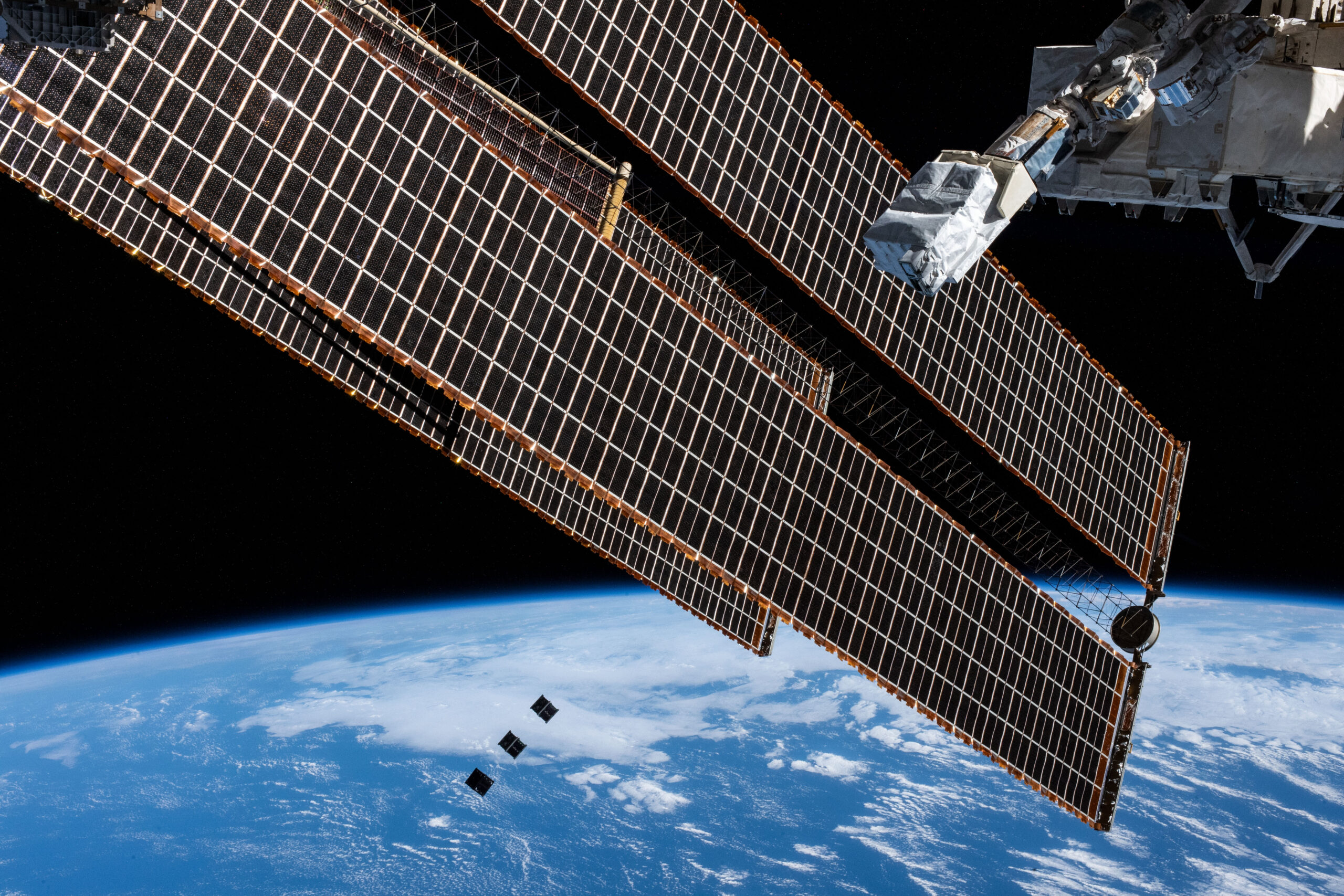
Earlier this year, the Archives recognised the significant nature of Western Australia’s first satellite mission to space and worked with the Space Science and Technology Centre (SSTC) to ensure the long-term preservation of these unique records and artefacts.
The Binar-1 CubeSat was built by Curtin University staff and students. Launched on 28 August 2021, the CubeSat’s journey around the earth lasted just over a year before it completed its last orbit on 1 October 2022.
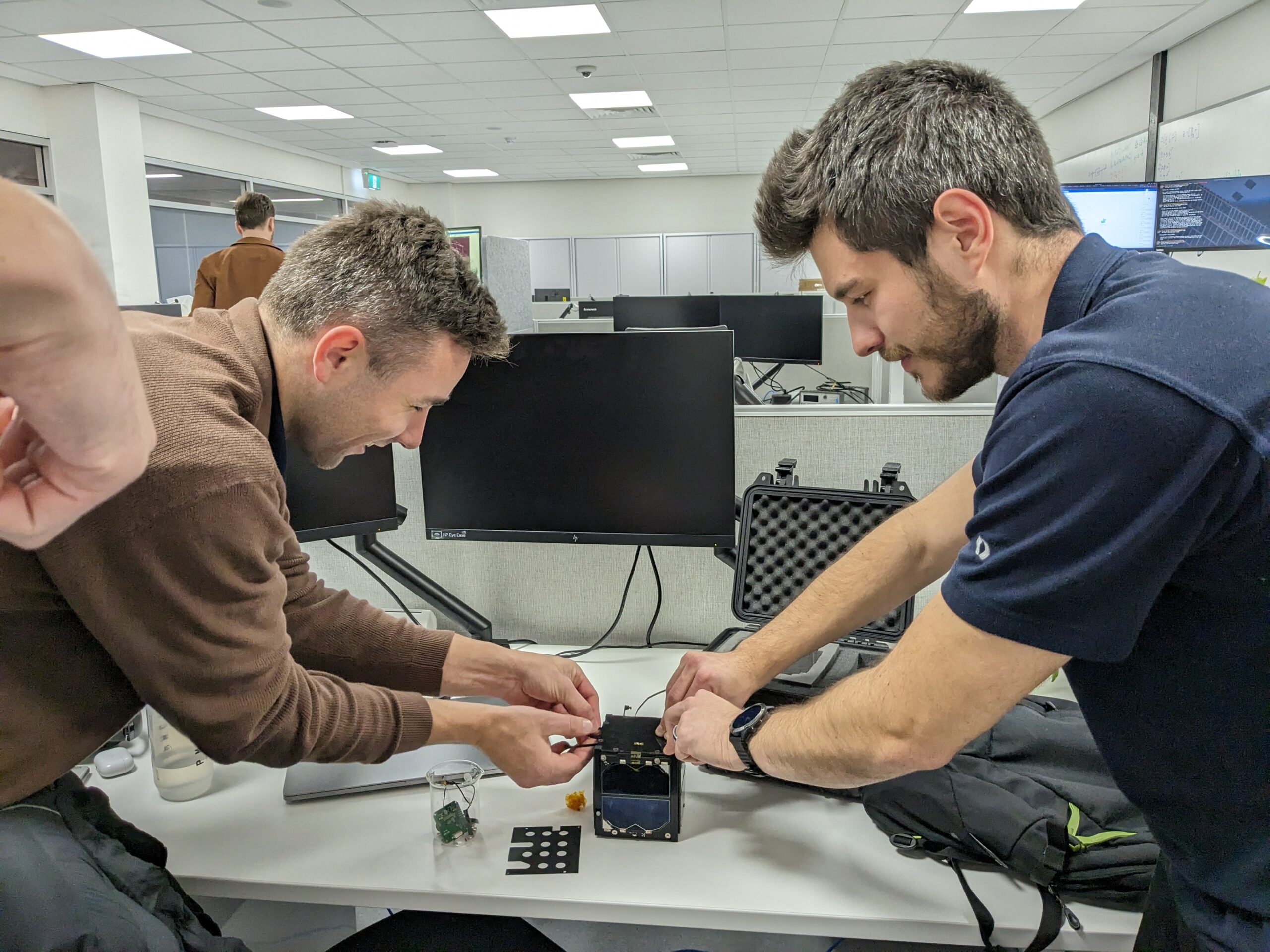
SSTC staff prepared the engineering model of the Binar-1 CubeSat for transfer to the Archives. The purpose of the engineering model was to troubleshoot potential problems with the flight model before and after deployment.
Working with the SSTC team meant we developed a better understanding of the project artefacts and improved archival record description, arranging and housing the objects for posterity.

The Binar-1 CubeSat was launched to the International Space Station in August 2021 from the SpaceX CRS-23 resupply mission. It was then deployed into its own orbit on 6 October 2021 from the Japanese Kibõ module (see image above). This image was taken from the International Space Station by the Japan Aerospace Exploration Agency.
The Binar-1 mission digital and physical objects are now stored to archival standards, ensuring the Binar-1 collection is now part of the State record and can be accessed as needed for activities such as displays or exhibitions.
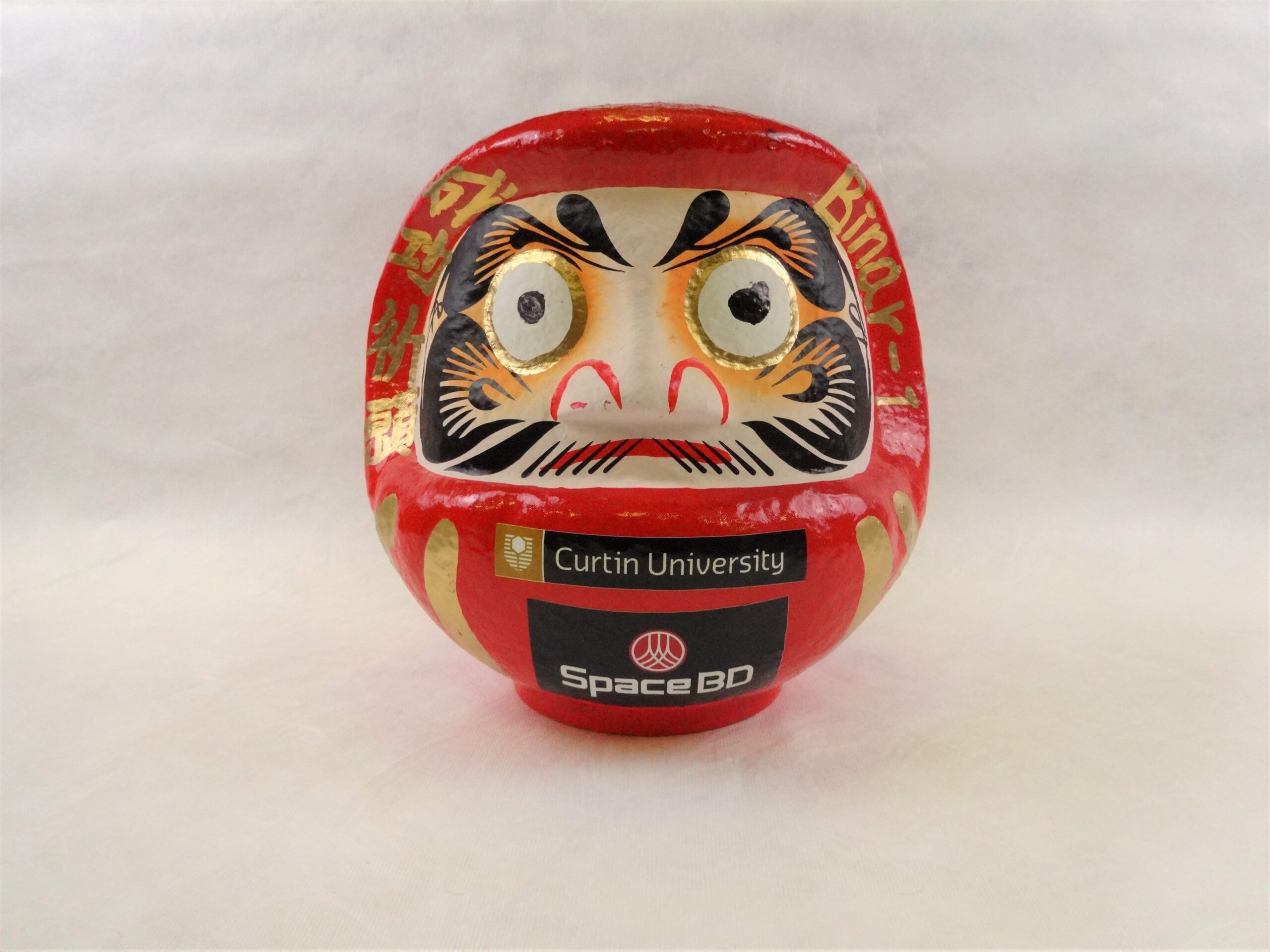
A traditional Japanese Daruma doll was presented to the Binar-1 team by Curtin’s Japanese partner SpaceBD. A daruma is typically hollow, red, round and depicts the Indian monk Bodhidharma. Seen as a symbol of perseverance, it is also meant to encourage and help with goal setting. Upon receiving the Phase 3 Safety assessment approval from SpaceBD, the team coloured one eye of the Daruma then shipped it to the Curtin SSTC team. After deployment of Binar-1, the other eye was coloured in to finish the process.
More Binar missions are planned, and we will continue to capture these significant records to ensure Western Australians can access this part of our shared history. In years to come the collections will be a way of revisiting Curtin and WA’s early achievements in developing the capability, expertise and industries needed to access space.
